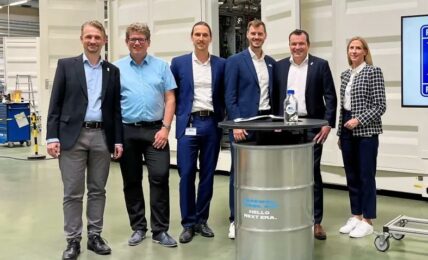Demand growth for green workforce skills is outpacing the increase in supply, as companies and countries globally begin to take action on implementing their climate and sustainability-related commitments, with current trends indicating that there will be more than twice as many jobs requiring green skills as there will be qualified workers available to fill those roles, according to new research released by professional talent social network LinkedIn.
For the study, LinkedIn’s 2024 Global Climate Talent Stocktake, and an accompanying research note from LinkedIn Staff Data Scientist Akash Kaura, LinkedIn examined anonymized platform data across its 1 billion members, including job postings and member profiles, and utilized a list of nearly 1,200 identified green skills and a list of green occupations or jobs requiring green skills.
The study found that the growth in demand for green skills has outpaced supply for several years, with demand growing by an annual average of 5.9% from 2021 – 2024, compared to an annual increase in green talent of 3.2% over that period.
Notably, while the pace of growth in both demand and supply increased over the past year, the green skills gap appears to have accelerated, with green talent demand growth of 11.6% between 2023 and 2024 more than doubling supply growth of 5.6%, according to the study.
Similarly, the study found that an increasing share of jobs are requiring green skills. In 2021, for example, the study noted that 6.8% of LinkedIn job postings were for a green job or required green skills, while currently that figure has reached 7.7%.
As green skills demand outpaces supply, the study indicated benefits for workers holding these skills, with LinkedIn finding that the hiring rate for green talent is nearly 55% greater than the overall hiring rate. These findings were particularly acute in some regions, with the green hiring rate in the U.S. outpacing the overall hiring rate by more than 80%, and in the UK by more than 70%.
While benefiting green-skilled workers, however, the accelerating skills gap identified by the study suggests significant challenges ahead for governments and businesses looking to realize their sustainability and climate-related targets, indicating an urgent need to upskill the workforce. According to the study, at current trends, the gap between green talent demand and supply is projected to reach 18.7% by 2030, and demand is expected to more than double supply, at a 101.5% gap, by 2050.
Sue Duke, VP of Public Policy and Economic Graph at LinkedIn, said:
“Every climate goal around the world, every commitment made, is at risk if we don’t have a workforce that can deliver the change we urgently need. The economic opportunity is there and a promising skills-based pathway exists. This year is an inflection point for our planet—and for workers—as countries and companies write new climate commitments; they must include explicit investments in the green workforce.”
Click here to access the Global Climate Talent Stocktake and research note reports.



